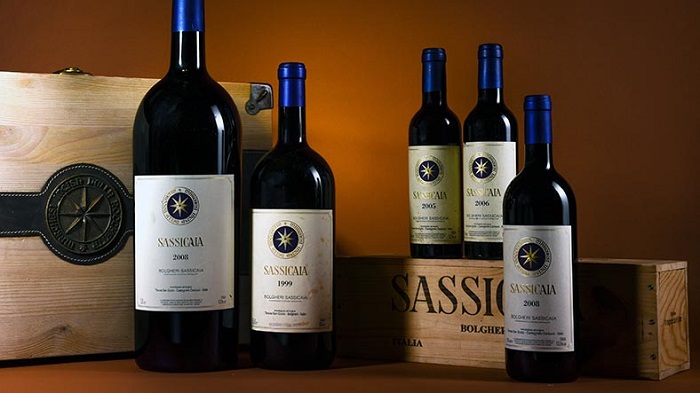Italy is a land of great wines, and Tuscany is one of the most renowned wine-growing regions. Thanks to its unique terroir and ancestral know-how, it produces prestigious wines that appeal to wine lovers the world over. Let's discover the secrets of Tuscan wines through their grape varieties, emblematic appellations and production methods.
An exceptional terroir for Tuscan wines
Tuscany' s climate is ideal for vine-growing. Mild winters and warm summers, combined with well-drained hills, provide perfect conditions for grape growing. This unique terroir favors the production of wines rich in aroma and with a fine tannic structure.
The region's flagship grape variety is Sangiovese. It gives rise to some of Tuscany's finest wines, including Chianti and Brunello di Montalcino. Other varieties, such as Canaiolo and Colorino, as well as international varieties like Cabernet Sauvignon and Merlot, are also grown to add complexity to the blends.
Chianti: the Tuscan wine par excellence
Chianti is without doubt Tuscany's most famous appellation. Produced mainly from Sangiovese grapes, this appellation is divided into several sub-regions, including Chianti Classico, considered one of the finest.
The main characteristics of Chianti:
- A brilliant ruby color, evolving to orange hues with age.
- Aromas of cherry, violet and spices, typical of Sangiovese.
- Its marked acidity gives it a lovely freshness.
- A balanced tannic structure that goes perfectly with Italian dishes.
The best Chianti Classico are often aged in oak barrels to refine their aromas and develop greater complexity.
Brunello di Montalcino: an exceptional wine
Brunello di Montalcino is a prestigious Tuscan wine made exclusively from Sangiovese Grosso, a more robust variant of the grape variety. It comes from the Montalcino region, where the warmer climate produces rich, powerful wines.
What makes Brunello di Montalcino so famous:
- Mandatory 5-year aging, including at least 2 years in oak barrels.
- Intense aromas of ripe red fruits, spices and tobacco.
- Full-bodied and tannic, perfect for laying down.
- Exceptional ageing potential, with some vintages evolving for over 30 years.
Thanks to this long maturation, Brunello di Montalcino is a refined wine that goes well with rich dishes such as braised meats, mature cheeses and traditional Tuscan cuisine.
Super Tuscans: innovation for prestige
In the 1970s, Tuscan winemakers decided to move away from traditional appellations and experiment with international grape varieties such as Cabernet Sauvignon, Merlot and Syrah. These wines, known as Super Tuscans, quickly gained worldwide renown.

Famous Super Tuscans include:
- Sassicaia: first classified Super Tuscan wine, known for its elegance and structure.
- Tignanello: an innovative wine combining Sangiovese, Cabernet Sauvignon and Cabernet Franc.
- Ornellaia: a wine with Bordeaux influences, renowned for its perfect balance.
These wines are not subject to the same regulations as Chianti or Brunello di Montalcino, allowing winemakers to give free rein to their creativity and offer modern, expressive wines.
Wine and food pairing with Tuscan wines
Tuscan wines are particularly well suited to Mediterranean cuisine and traditional Italian dishes.
- Chianti Classico: perfect with pasta in tomato sauce, lasagne or Neapolitan pizza.
- Brunello di Montalcino: ideal with bistecca alla fiorentina, mature red meats or truffles.
- Super Tuscans: pair with grilled meats, game and mature cheeses.
The choice of wine depends not only on the dish, but also on the vintage and age of the wine.
If you enjoyed this article, don't hesitate to read the following article "Why do some wines have natural bubbles?", which might also interest you!





